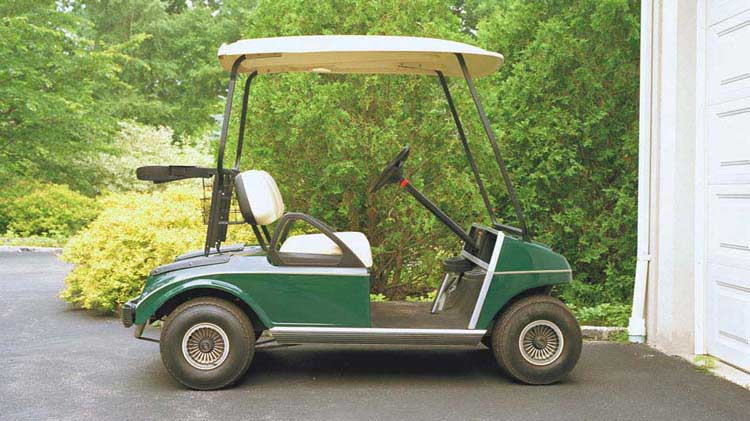Content Menu
● Understanding Electric Golf Cart Batteries
>> Lead-Acid Batteries
>> Lithium-Ion Batteries
● Factors Affecting Electric Golf Cart Run Time
>> Battery Capacity
>> Terrain
>> Weight and Load
>> Driving Speed
>> Weather Conditions
>> Battery Age and Condition
● Typical Run Times for Electric Golf Carts
● Maximizing Your Electric Golf Cart's Run Time
● Real-World Performance Examples
>> Scenario 1: Golf Course Use
>> Scenario 2: Neighborhood Transportation
>> Scenario 3: Extended Use
● Advancements in Electric Golf Cart Technology
● Environmental Impact of Electric Golf Carts
● Comparing Electric and Gas Golf Carts
● Case Study: Long-Range Electric Golf Cart
● Future of Electric Golf Carts
● Conclusion
● Frequently Asked Questions
>> 1. How often should I charge my electric golf cart?
>> 2. Can I leave my electric golf cart plugged in all the time?
>> 3. How can I tell when my electric golf cart batteries need replacement?
>> 4. Are lithium-ion batteries worth the extra cost for electric golf carts?
>> 5. Can I upgrade my lead-acid battery golf cart to lithium-ion?
Electric golf carts have become increasingly popular for their eco-friendly nature, low maintenance requirements, and quiet operation. One of the most common questions potential buyers and users ask is about their range and running time. In this comprehensive guide, we'll explore the factors that influence how long an electric golf cart can run and provide insights to help you maximize your cart's performance.

Understanding Electric Golf Cart Batteries
The heart of any electric golf cart is its battery system. Most electric golf carts use either lead-acid or lithium-ion batteries, with the latter becoming more common due to their superior performance and longevity.
Lead-Acid Batteries
Lead-acid batteries are the traditional choice for golf carts. They're less expensive upfront but require more maintenance and have a shorter lifespan compared to lithium-ion batteries.
Lithium-Ion Batteries
Lithium-ion batteries offer several advantages:
- Longer lifespan
- Faster charging times
- Lighter weight
- Maintenance-free operation
While more expensive initially, lithium-ion batteries often prove more cost-effective in the long run due to their extended life and improved performance.
Factors Affecting Electric Golf Cart Run Time
Several factors influence how long an electric golf cart can run on a single charge:
Battery Capacity
The capacity of the battery pack, measured in amp-hours (Ah), directly affects the cart's range. A higher Ah rating generally means a longer run time.
Terrain
The type of terrain you're driving on significantly impacts battery life:
- Flat surfaces allow for optimal energy efficiency
- Hilly or rough terrain requires more power, reducing overall run time
Weight and Load
The total weight of the cart, including passengers and cargo, affects energy consumption:
- Heavier loads require more power to move
- Lighter loads allow for extended run times
Driving Speed
Maintaining a consistent, moderate speed is most efficient. Frequent acceleration and high-speed driving can drain the battery faster.
Weather Conditions
Temperature extremes can affect battery performance:
- Cold weather can reduce battery efficiency
- Hot weather may increase power consumption due to air conditioning use
Battery Age and Condition
As batteries age, their capacity diminishes:
- New batteries will provide the best performance
- Regular maintenance can help maintain battery health over time

Typical Run Times for Electric Golf Carts
On average, a well-maintained electric golf cart can run for:
- 25-40 miles on a single charge for lead-acid batteries
- 40-60 miles on a single charge for lithium-ion batteries
In terms of time, this typically translates to:
- 45-90 minutes of continuous "pedal to the metal" driving
- 2-4 hours of regular use on a golf course
Maximizing Your Electric Golf Cart's Run Time
To get the most out of your electric golf cart's battery, consider these tips:
1. Regular Charging: Always charge your cart after use, even if the battery isn't fully depleted.
2. Proper Maintenance: For lead-acid batteries, check water levels monthly and clean terminals regularly.
3. Avoid Deep Discharges: Try not to completely drain the battery before recharging.
4. Tire Pressure: Keep tires properly inflated to reduce rolling resistance.
5. Smooth Driving: Avoid sudden accelerations and maintain a steady speed when possible.
6. Weight Management: Don't overload your cart beyond its recommended capacity.
7. Upgrade to Lithium: Consider upgrading to lithium-ion batteries for improved performance and longevity.
Real-World Performance Examples
To give you a better idea of what to expect, let's look at some real-world scenarios:
Scenario 1: Golf Course Use
A typical 18-hole round of golf takes about 4 hours. Most electric golf carts can easily handle this with charge to spare, even when navigating hilly terrain.
Scenario 2: Neighborhood Transportation
For short trips around a community, an electric golf cart can often last several days on a single charge, depending on usage patterns.
Scenario 3: Extended Use
For longer trips or all-day use, you may need to consider mid-day charging or opting for a cart with higher battery capacity.
Advancements in Electric Golf Cart Technology
Recent technological advancements have significantly improved the performance of electric golf carts:
- Regenerative Braking: Some modern carts recapture energy during braking, extending battery life.
- Solar Panel Integration: Solar panels can provide supplemental charging, especially useful for carts left outdoors.
- Smart Battery Management Systems: Advanced systems optimize charging and discharging for improved efficiency and battery longevity.
Environmental Impact of Electric Golf Carts
Choosing an electric golf cart over a gas-powered one has significant environmental benefits:
- Zero direct emissions
- Lower carbon footprint, especially when charged with renewable energy
- Reduced noise pollution
These factors make electric golf carts an excellent choice for eco-conscious individuals and organizations.

Comparing Electric and Gas Golf Carts
While this article focuses on electric golf carts, it's worth briefly comparing them to their gas-powered counterparts:
| Feature | Electric Golf Cart | Gas Golf Cart |
| Range | 25-60 miles | 100-180 miles |
| Refueling Time | 4-8 hours | 5 minutes |
| Maintenance | Low | Higher |
| Noise Level | Very quiet | Louder |
| Emissions | None | Produces exhaust |
| Initial Cost | Higher | Lower |
| Operating Cost | Lower | Higher |
Case Study: Long-Range Electric Golf Cart
To illustrate the potential of electric golf carts, let's look at a case study of a high-performance model:
The XYZ LongRange Pro is equipped with a 76V lithium-ion battery system and boasts an impressive range of up to 90 miles on a single charge. This cart features:
- Advanced battery management system
- Regenerative braking
- Lightweight aluminum frame
- High-efficiency electric motor
This example demonstrates how technological advancements are pushing the boundaries of electric golf cart performance.
Future of Electric Golf Carts
The future looks bright for electric golf carts, with ongoing developments in battery technology and energy efficiency. We can expect to see:
- Even longer ranges
- Faster charging times
- Integration with smart technology for improved performance monitoring
- Increased adoption in various industries beyond golf
Conclusion
Electric golf carts have come a long way in terms of performance and reliability. While the exact run time can vary based on numerous factors, most modern electric golf carts can easily handle a full day of typical use on a single charge. With proper maintenance and smart usage habits, you can maximize your cart's run time and enjoy the benefits of clean, efficient transportation.
As battery technology continues to advance, we can expect even better performance from electric golf carts in the future, making them an increasingly attractive option for both recreational and practical use.

Frequently Asked Questions
1. How often should I charge my electric golf cart?
It's best to charge your electric golf cart after each use, even if the battery isn't fully depleted. This practice, known as "opportunity charging," can help extend the overall life of your batteries.
2. Can I leave my electric golf cart plugged in all the time?
Most modern electric golf carts have built-in charge controllers that prevent overcharging. However, it's still a good idea to unplug the cart once it's fully charged to avoid any potential issues and save on electricity costs.
3. How can I tell when my electric golf cart batteries need replacement?
Signs that your batteries may need replacement include:
- Decreased range
- Longer charging times
- Difficulty climbing hills
- Visible damage or corrosion on the batteries
If you notice these signs, it's best to have your batteries checked by a professional.
4. Are lithium-ion batteries worth the extra cost for electric golf carts?
While lithium-ion batteries have a higher upfront cost, they often prove more cost-effective in the long run due to their longer lifespan, improved performance, and lower maintenance requirements. For frequent users, the investment in lithium-ion batteries can be well worth it.
5. Can I upgrade my lead-acid battery golf cart to lithium-ion?
In many cases, yes. However, the process may involve more than just swapping out the batteries. You may need to upgrade the cart's controller and possibly other components to be compatible with lithium-ion batteries. It's best to consult with a professional or the cart manufacturer before making this upgrade.











































